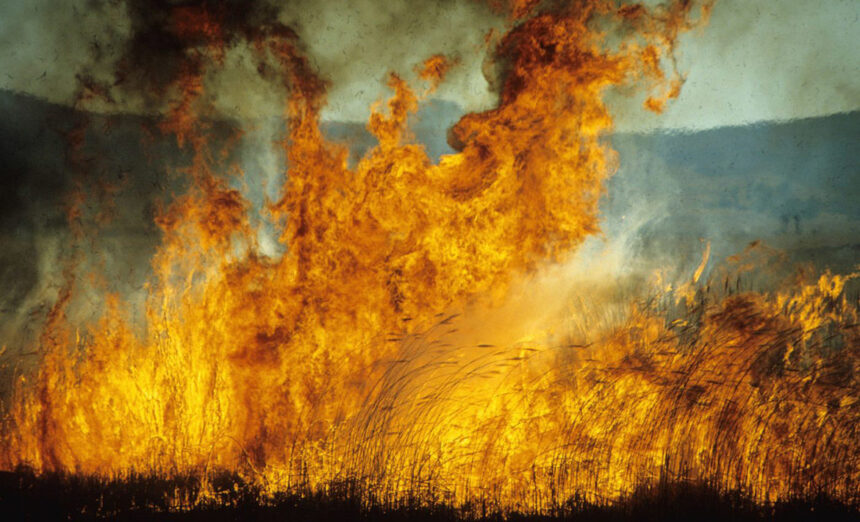Rangeland productivity is influenced by several factors such as rainfall soil condition, fire, herbivory, and other ecological forces like plant competition, amongst others.
In addition, human activities cannot be ignored when it comes to rangeland utilisation. The adverse influence of these factors can disturb the normal ecological processes, leading to rangeland degradation.
One of the recurrent factors that shape rangeland ecosystems is fire (commonly known as veld fires or wildfires), which can occur naturally or as man-made.
Many farmers have negative perceptions about veld fires due to their dangerous and destructive nature. However, natural veld fire events serve a very important ecological function.
For example, burning moribund materials to allow regrowth or tillering, stimulating seed germination by cracking seed coats, and largely maintaining vegetation structures in terms of spacing and balance (e.g., controlling bush encroachment).
On the other hand, artificial or man-made fires are either started on purpose (prescribed fire) or can be out of negligence or accident. The prescribed fires are planned for rangeland management purposes to mimic natural influences.
These types of fires can also become uncontrolled and devastating if poorly-planned and managed. Veld fires damage farm infrastructure (e.g., fences, pipes), and the environment (habitats, soil, plants), and result in injuries and deaths in animals (livestock and wild animals), and humans as well.
Furthermore, a fire burns the available forage materials, leaving animals with little or nothing to survive on.
Generally, natural veld fires are caused by lightning strike, and mainly occur during the spring months or at the onset of the rainy season (September – November) when thunderstorm activities begin.
Therefore, farmers should prepare to avoid huge losses during this critical period. In some parts of Namibia, fire activities have already started, and most of these unplanned or accidental fires can be attributed to human activities including charcoal production, campfires, cigarettes, vehicles, hunting, and poaching activities, empty glass bottles, or glass pieces that can magnify the sun’s heat and ignite dry grass.
The intensity of a veld fire is mainly influenced by the amount of fuel loads such as dry grass or other moribund plant materials such as dead wood. The more the fuel loads, the higher the intensity of fire and its impact.
In addition, the wind influences the direction, speed, and spatial scale of the fire.
Fighting wildfires is a difficult and exhaustive exercise, it can be costly and devastating. It is therefore important that farmers prepare well in advance by acquiring firefighting equipment and ensuring that they are accessible, functional, and ready.
The farm roads and fire breaks should be well maintained, cleared, and accessible, and the water reservoirs should always be kept full to refill the fire tanks in the event of firefighting.
Most importantly, all persons must be well-informed and trained in firefighting and lifesaving. Moreover, the neighbouring farmers and all relevant authorities should be informed.
Thus, an effective communication channel should be established to ensure coordinated efforts. It is, therefore, important that a fire management plan is developed and adopted in the whole farm management plan under risk management components.
In addition, the plan should include aspects of fodder reserves for the animals if the forage resources are burned. Veld fires are an annual occurrence, and farmers must continually prepare, whether in communal or commercial farming areas.
*Erastus Ngaruka is Agribank’s technical advisor on livestock and rangeland.



